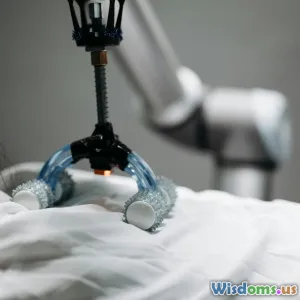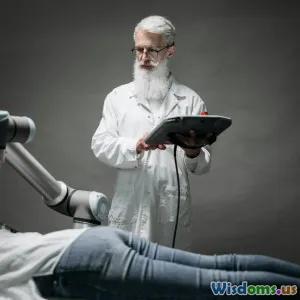
Robots in Society: Sci Fi Predictions and Realities
5 min read Exploring the impact of robots in society through the lens of science fiction and real-world advancements. (0 Reviews)
Robots in Society: Sci-Fi Predictions and Realities
The integration of robots into society has long been a staple of science fiction. From Isaac Asimov's "I, Robot" to the film "Blade Runner," these narratives have shaped public perception and expectation of robotic technology. As we delve into the current realities of robotics, we’ll explore how these fictional predictions align with or diverge from our present-day experiences.
Historical Context of Robots in Sci-Fi
Science fiction has a rich history of exploring the implications of robotics. Early works often portrayed robots as laborers or companions, reflecting societal hopes and fears. For instance:
- Metropolis (1927): Fritz Lang’s film depicted a dystopian future where humans and machines coexist, highlighting the potential for both harmony and strife.
- Star Wars (1977): With characters like C-3PO and R2-D2, robots were shown as assistants, capable of complex interactions with humans.
These representations set the stage for public interest in robotics, paving the way for real-world innovations.
Current Technological Advances
1. Automation in Industry
The rise of automation has transformed industries. Robots are now commonplace in manufacturing, performing tasks ranging from assembly to quality control. Companies like Tesla and Amazon use robots to enhance efficiency and productivity, reflecting a shift towards smart manufacturing.
2. Service Robots
In hospitality and healthcare, robots are being utilized to assist staff and improve customer experiences. For example, robot waiters are serving food in some restaurants, while telepresence robots allow doctors to consult with patients remotely, showcasing practical uses in everyday life.
3. Social Robots
Social robots such as SoftBank’s Pepper and Boston Dynamics’ Spot are designed to engage with humans emotionally and physically. These robots are being tested in schools, homes, and public spaces, offering companionship and assistance.
Addressing Ethical and Societal Concerns
While the advancements in robotics present numerous opportunities, they also raise ethical questions:
- Job displacement: As robots take over repetitive tasks, there’s concern over job loss among workers. How can society adapt?
- Privacy issues: With robots collecting data for efficiency, privacy concerns arise. How do we ensure responsible data use?
- Dependence on technology: As we rely more on robots, what are the implications for human interaction and community?
These issues echo the cautionary tales found in science fiction, underscoring the importance of thoughtful implementation of robotic technologies.
The Future of Robots in Society
Looking ahead, the future of robots in society is both exciting and uncertain. As AI continues to advance, we may see:
- Enhanced Intelligence: Future robots may possess advanced learning capabilities, adapting to human needs in real-time.
- Collaboration with Humans: Rather than replacing workers, robots could become partners, collaborating on complex tasks and projects.
- Personalized Experiences: Expect robots to offer more personalized services, catering to individual needs and preferences in various sectors.
Conclusion
The journey of robots from science fiction to reality is both fascinating and complex. As technology continues to evolve, the challenge lies in ensuring that robotic advancements enhance human life while addressing ethical concerns. By learning from the predictions and narratives woven into sci-fi, we can navigate the future of robotics in society more thoughtfully. The dialogue between our imagined futures and our current realities will ultimately shape the role of robots in the world to come.
Rate the Post
User Reviews
Popular Posts





















